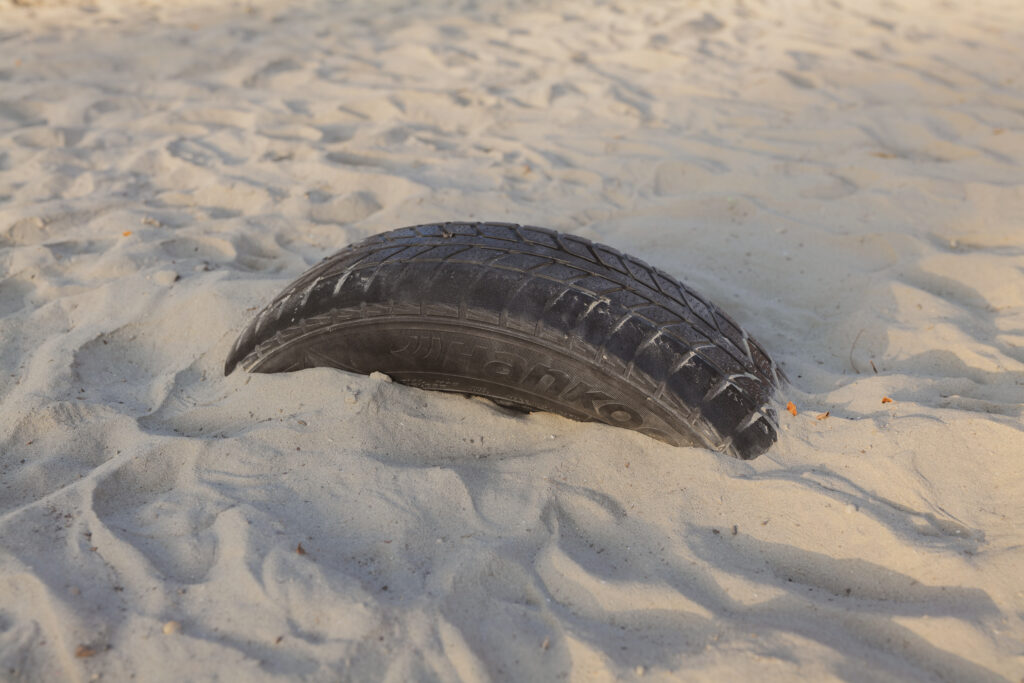Are you someone who only thinks about replacing your tires when the tread wears thin? Well, what if I told you that tires can actually expire, even if they still have plenty of tread left? That’s right – just like other perishable items, tires have a recommended lifespan. Whether you’re a car enthusiast or someone who just wants to keep their vehicle safe, it’s important to understand the concept of tire expiration. In this article, we’ll explore why tires have an expiration date, the telltale signs of an expired tire, and how to properly care for your tires to extend their lifespan. Get ready to ride smoothly and securely as we dive into the topic of tire expiration!

Common misconceptions about tire lifespan
Misconception 1: Tread depth is the sole indicator of tire lifespan
One common misconception about tire lifespan is that tread depth is the sole indicator. While tread depth is important for maintaining traction and avoiding hydroplaning, it does not solely determine the overall lifespan of a tire. Tread wear can be affected by various factors such as driving habits, road conditions, and tire maintenance. Therefore, relying solely on tread depth to assess the lifespan of a tire is not accurate.
Misconception 2: Only old tires can expire
Another misconception is that only old tires can expire. While it is true that tire aging is a significant factor in expiration, age is not the only determinant. Tires can potentially expire even if they have good tread and are relatively young. Other factors such as exposure to extreme temperatures, improper storage, and the type of rubber compound can also contribute to the expiration of tires.
Misconception 3: Tires can last indefinitely if not used
Some people believe that if tires are not used frequently, they can last indefinitely. However, this is not true. The chemical process of tire aging will continue even if the tires are not in use. Exposure to oxygen, heat, and other environmental elements can cause tire compounds to degrade over time. It is important to understand that even if tires are not in use, they are still subject to aging and eventual expiration.
Misconception 4: All tires have the same expiration date
There is a common misconception that all tires have the same expiration date. In reality, each tire has a specific manufacturing date and an estimated lifespan that can vary depending on various factors. Different tire models, brands, and types may have different expiration timelines due to variations in rubber compound composition and construction. It is important for drivers and owners to understand that tires do not have a uniform expiration date.
The role of tire age in expiration
The chemical process of tire aging
Tire aging is a natural process influenced by chemical reactions within the rubber compounds. Over time, the molecular structure of the tire undergoes changes due to exposure to oxygen and heat. These changes result in a gradual hardening of the rubber, which can lead to reduced flexibility and durability. The chemical process of tire aging cannot be reversed, and it ultimately contributes to the expiration of tires.
Factors that influence tire aging
Various factors can accelerate the aging process of tires. Exposure to sunlight and ultraviolet (UV) radiation can speed up the degradation of rubber compounds. Additionally, high temperatures, excessive heat, and prolonged use of underinflated tires can also accelerate tire aging. Furthermore, environmental conditions, such as air pollution and chemical exposure, can contribute to the chemical reactions that occur during tire aging.
The importance of tire manufacturing date
The manufacturing date of a tire plays a crucial role in determining its potential lifespan. Tires have a unique alphanumeric code known as the Tire Identification Number (TIN), which includes the manufacturing date. The last four digits of the TIN represent the week and year of manufacture. It is essential for consumers to be aware of the manufacturing date when purchasing tires to ensure they are not already approaching their expiration date.
Recognizing the signs of an expired tire
Recognizing the signs of an expired tire is vital to ensure safety on the road. Some common indications of tire expiration include visible sidewall cracks, bulges or bubbles, tread separation, and uneven wear patterns. Additionally, if a tire is older than six years, even if it appears to have good tread depth, it is recommended to have it thoroughly inspected by a professional to assess its overall condition and potential expiration.
Safety implications of expired tires
Reduced traction and increased risk of hydroplaning
Expired tires are more prone to reduced traction, particularly in wet or slippery conditions. As tires age, their rubber compound hardens, leading to a decrease in grip on the road surface. This reduction in traction can significantly increase the risk of hydroplaning, where the tire loses contact with the road and slides on a thin layer of water. Hydroplaning greatly compromises the driver’s control over the vehicle and increases the likelihood of accidents.
Increased susceptibility to blowouts and punctures
Expired tires are more susceptible to blowouts and punctures. As the tire ages, its structural integrity weakens, making it more vulnerable to sudden tire failures. The weakened rubber compound can develop cracks, leading to blowouts, especially under high-stress conditions, such as driving at high speeds or carrying heavy loads. Additionally, the reduced flexibility of an expired tire can make it more prone to punctures from sharp objects on the road.
Compromised handling and stability
Expired tires can compromise the handling and stability of a vehicle. As the rubber hardens with age, the tire becomes less responsive to steering inputs, leading to decreased control and stability while driving. This can negatively affect the overall handling capabilities of the vehicle, making it more challenging to navigate corners and maintain control during emergency maneuvers.
Negative impact on braking distance
Braking distance is significantly affected by the condition of the tires. Expired tires tend to have reduced grip and traction, resulting in longer braking distances. This increased stopping distance can be extremely dangerous, especially in emergency situations where quick and precise braking is necessary to avoid collisions.
Optimal tire maintenance and storage practices
Regular inspection for signs of aging
Regularly inspecting tires for signs of aging is crucial for identifying potential expiration risks. Look for visible cracks, bulges, or other deformities on the sidewalls, as well as any abnormalities in tread wear patterns. Additionally, check the manufacturing date to be aware of the age of the tires and take appropriate maintenance measures based on their condition.
Proper inflation and rotation
Maintaining proper tire inflation is essential for maximizing tire lifespan. Underinflated or overinflated tires can accelerate the aging process and lead to uneven wear. Regularly check tire pressure and inflate tires to the recommended levels specified by the vehicle manufacturer. Additionally, rotating tires at regular intervals promotes even wear across all tires and extends their overall lifespan.
Avoidance of extreme temperatures
Avoid exposing tires to extreme temperatures, both hot and cold, whenever possible. High temperatures can accelerate the aging process, while extreme cold can cause the rubber to harden, leading to reduced flexibility and increased susceptibility to damage. Whenever feasible, park vehicles in shaded areas or use covers to minimize direct sunlight exposure.
Best practices for tire storage
Proper tire storage is crucial for minimizing premature aging. When storing tires, clean them thoroughly to remove any dirt or debris, as these can potentially damage the rubber compound. Store tires in a cool, dry, and well-ventilated area away from direct sunlight and sources of heat. If tires are stored for an extended period, it is advisable to periodically rotate or reposition them to prevent flat spots from forming.

Industry regulations and recommendations
Federal regulations on tire aging
The United States’ Federal Motor Vehicle Safety Standards (FMVSS) does not currently address tire expiration or aging as a specific regulation. However, the National Highway Traffic Safety Administration (NHTSA) provides guidelines and recommendations regarding tire maintenance and safety. It is important for consumers to stay informed about these guidelines and follow the manufacturer’s recommendations for tire maintenance and replacement.
Manufacturer recommendations and warranties
Tire manufacturers typically provide recommendations and guidelines for tire maintenance, including information about the expected lifespan of their products. Following these recommendations is crucial for maximizing tire performance and preventing premature aging. Additionally, many manufacturers offer warranties that cover defects or premature tire failure, emphasizing the importance of proper maintenance and usage.
Certification marks for tire expiration
Some countries, such as Germany, have implemented certification marks to indicate tire expiration. These marks help consumers identify the expiration date of a tire by displaying a specific symbol or code. While not widely adopted globally, these certification marks provide an additional level of transparency and consumer awareness regarding tire expiration.
Understanding tire tread and expiration
The relation between tire tread and expiration
Tire tread is an important aspect of tire safety, but it is not directly linked to tire expiration. Tread depth primarily affects traction, especially in wet or snowy conditions, but it does not determine the overall lifespan of a tire. Even tires with sufficient tread depth can still expire due to factors such as age, rubber compound degradation, and structural integrity.
Tread depth as an indicator of tire health
Although tread depth is not an indicator of tire expiration, it is essential to monitor and maintain proper tread depth for optimal safety. Tires with low tread depth are more prone to aquaplaning, reduced grip on slippery surfaces, and longer braking distances. Regularly measuring tire tread depth using a tread depth gauge is recommended to ensure they meet the minimum legal requirements and maintain optimal performance.
Common myths about tread depth and expiration
There are several common myths regarding the relationship between tread depth and tire expiration. One myth is that as long as the tread depth reaches a certain legal limit, it indicates that the tire is still safe to use. However, as discussed earlier, expiration is not solely determined by tread depth. Another myth is that tires with deeper tread can last longer. While deeper tread may provide better traction initially, it does not guarantee prolonged tire lifespan if the tire is already compromised by other factors.

How to check tire expiration
Locating the tire manufacturing date code
To determine the manufacturing date of a tire, locate the Tire Identification Number (TIN) on the sidewall. The last four digits of the TIN represent the week and year of manufacture. The first two digits represent the week, while the last two digits represent the year. For example, if the last four digits are “2319,” it signifies that the tire was manufactured on the 23rd week of the year 2019.
Calculating the tire age
Once the manufacturing date is identified, calculating the tire age is relatively straightforward. Subtract the manufacturing year from the current year to determine the age of the tire. For example, if the manufacturing year is 2019 and the current year is 2023, the tire would be considered four years old.
Indicators of tire expiration
Apart from age, there are several indicators that a tire may be expired. These indicators include visible cracks on the sidewall, bulges or bubbles on the tire surface, tread separation, and uneven tread wear patterns. If any of these signs are present, it is crucial to seek professional assistance to determine if the tire is safe for continued use or if it needs to be replaced.
Seeking professional assistance
If there is uncertainty regarding the condition or expiration of tires, it is advisable to consult a professional tire technician. Tire technicians have the expertise and equipment to thoroughly inspect tires and provide accurate assessments. They can help determine whether a tire is safe for continued use or if it should be replaced due to expiration or other issues.
Prolonging the life of tires
Regular maintenance and inspections
Regular maintenance and inspections are key to prolonging the life of tires. This includes checking tire pressure regularly, performing visual inspections for signs of damage or aging, and ensuring proper alignment and rotation. Following the manufacturer’s recommended maintenance schedule is essential for maximizing the performance and lifespan of tires.
Driving habits and road conditions
Driving habits and road conditions significantly affect tire lifespan. Avoiding aggressive driving, sudden braking, and excessive speeding can reduce tire wear. Additionally, driving on well-maintained roads and avoiding potholes and other hazards can minimize the risk of tire damage and premature aging.
Use of tire protectants and sunscreens
The use of tire protectants and sunscreens can help minimize the impact of UV radiation and environmental elements on tires. These products create a barrier between the tire surface and harmful agents, reducing the rate of degradation and preserving the rubber compound’s integrity over time. When using these products, ensure they are compatible with the specific tire model and follow the manufacturer’s instructions for proper application.
Considerations for seasonal and spare tires
Seasonal tires and spare tires require additional attention to ensure their longevity. Proper storage of seasonal tires during their off-season can help mitigate premature aging. It is recommended to store seasonal tires in a cool, dry place away from direct sunlight and extreme temperatures. When it comes to spare tires, regularly inspect them to ensure they are in good condition and properly inflated, as they may stay unused for extended periods.

Environmental impact of tire expiration
Disposal methods for expired tires
Proper disposal of expired tires is crucial to minimize negative environmental impacts. Tires should never be discarded in regular waste bins or dumped illegally. Many localities have tire recycling programs or designated collection points where expired tires can be disposed of safely. These programs ensure that tires are recycled or processed correctly, minimizing their impact on the environment.
Benefits of proper tire recycling
Proper tire recycling offers several environmental benefits. When tires are recycled, they can be transformed into various useful materials such as rubber crumb, which can be used to produce items like playground surfaces, sports fields, and road surfaces. Recycling tires reduces the need for raw materials and minimizes waste in landfills, contributing to a more sustainable and circular economy.
Effects of tire waste on the environment
Improperly disposed of tire waste can have severe environmental consequences. When tires end up in landfills or are illegally dumped, they can create fire hazards, as they are highly flammable. Moreover, tires can leach harmful chemicals into the surrounding soil and groundwater, polluting ecosystems. Tires left in the environment can also serve as breeding grounds for disease-carrying mosquitoes.
Innovations in tire recycling
Innovations in tire recycling technologies are continuously emerging to address the environmental impact of tire waste. These technologies aim to improve the efficiency and effectiveness of tire recycling processes, enabling the recovery of valuable materials from the tires. Advanced methods such as pyrolysis and devulcanization show promise in breaking down tires into their constituent components for reuse in various industries.
Conclusion
Understanding the misconceptions surrounding tire lifespan is crucial for ensuring safety and maximum performance on the road. While tread depth is an important factor, it is not the sole indicator of tire lifespan. Tire age, influenced by various factors such as chemical processes, environmental conditions, and manufacturing date, plays a significant role in tire expiration. Expired tires can pose serious safety risks, including reduced traction, increased chances of blowouts and punctures, compromised handling, and longer braking distances. Proper tire maintenance and storage practices, following industry regulations and recommendations, and regular inspections are essential for prolonging tire life and ensuring optimal safety. Additionally, being mindful of the environmental impact of tire expiration, focusing on proper tire recycling, and staying informed about innovations in tire recycling contribute to promoting sustainability and a healthier planet. By dispelling misconceptions, understanding the role of tire age, prioritizing safety, and being environmentally conscious, you can make informed decisions and ensure the longevity and performance of your tires.


